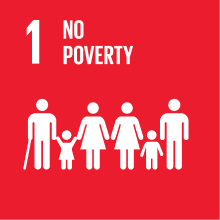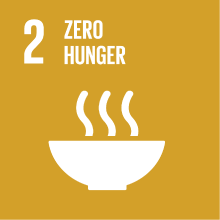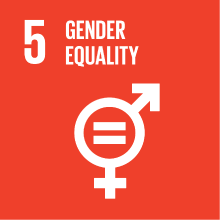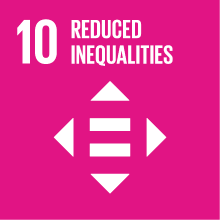HISPANIC AMERICAN LITERATURE 2-2
- Academic year
- 2025/2026 Syllabus of previous years
- Official course title
- LITERATURA HISPANOAMERICANA 2-2
- Course code
- LMI03Q (AF:518268 AR:321771)
- Teaching language
- Spagnolo
- Modality
- On campus classes
- ECTS credits
- 6 out of 12 of HISPANIC AMERICAN LITERATURE 2
- Degree level
- Master's Degree Programme (DM270)
- Academic Discipline
- L-LIN/06
- Period
- 1st Semester
- Course year
- 2
- Where
- VENEZIA
- Moodle
- Go to Moodle page
Contribution of the course to the overall degree programme goals
The course aims to deepen the knowledge of cultural themes and dynamics characterizing the Spanish-American literature of the twentieth and twenty-first centuries.
The objectives of the teaching are: to deepen the specific knowledge of cultural themes and dynamics of the Hispanic-American subcontinent; provide methodological tools aimed at analyzing the Argentine and Chilean literary, film and comics productions of the twentieth and twenty-first centuries, develop the ability to reflect on the proposed literary texts and carry out comparative analyzes.
Expected learning outcomes
The objectives of the course are:
1. to deepen the specific knowledge of cultural and political themes and dynamics of the Hispanic-American subcontinent;
2. to provide methodological tools aimed at analyzing the most significant Hispanic-American literary productions of the 21st century understood, on the one hand, as cultural documents and, on the other, as aesthetic creations;
3. to develop the ability to reflect on the proposed literary, comic and cinematographic texts, recognizing in them the use of various literary genres such as the diary, the fictional story, the testimonial novel, the documentary.
4. provide theoretical tools for analyzing the category of postmemory and issues related to indigenism.
5. Finally, the course aims to develop the ability to learn the themes and tools offered during the course, as well as communication skills.
Pre-requirements
Contents
The course aims to provide an overview of contemporary Hispanic-American literary, film, documentary and comic productions.
By carrying out a comparative analysis between the intersemiotic productions produced in the 20th and 21st centuries in the Southern Cone, which focus on the same themes, it is possible to find some points of contact. We will analyze poetry and its relationship with Land Art, the relationship between human beings and the environment, the concept of memory and postmemory in connection with the landscape, the drama of cross-border migration and contemporary Mapuche literature.
1. First, students will be provided with a historical-cultural framework of the political situation in Chile and Argentina during the 20th century, proposing a reflection on the essential importance of the natural element in Hispanic-American artistic and literary productions.
2. Subsequently, the methodological elements necessary for the analysis of transmedia productions and different languages will be offered. At this time, students will also be invited to choose one or more of the proposed themes and develop a presentation in class.
Referral texts
Zurita, Raúl — González y Los Asistentes — Giacon, Massimo (2018). Desiertos de amor / Deserti d’amore. Roma: Squilibri.
Nostalgia de la luz (2010), Patricio Guzmán, 90 min.
El botón de Nácar (2015), Patricio Guzmán, 82 min.
La cordillera de los sueños (2019), Patricio Guzmán, 84 min.
Garage Olimpo (1999). Marco Bechis, 98 min.
Bechis, Marco (2021). La solitudine del sovversivo. Milano: Guanda.
Ferraris, Andrea — Chiocca, Renato (2017). La cicatrice. Cagliari: Oblomov Edizioni (comic)
La jaula de oro (2013). Diego Quemada-Diez, 110 min.
Catrileo, Daniela (2019). Piñen. Santiago: Libros del Pez Espiral.
Mala junta (2017), Claudia Huaiquimilla, 89 min.
CRITICAL BIBLIOGRAPHY:
AAVV (2017). “Dosier Garage Olimpo”. Perassi, Emilia — Calabrese, Giuliana (eds.). Donde no habite el olvido. Herencia y transmisión del testimonio en Argentina. Milano: Ledizioni, pp. 166-212.
Amaro, Lorena (2021). “Lenguas que estallan. Traducción y rebelión de la “normalidad” lingüística en tres narrativas pre y post estallido social chileno”. ALEA, vol. 23/2, p. 77-91.
Arenas-Carter, Rodrigo (2017). «Práctica poética del arte de la performance como resistencia en Latinoamérica». AA.VV. Pensar a Contracorriente XIII. La Habana: Editorial Nuevo Milenio.
Barros Cruz, María José (2016). ««Chile país torturado»: la herida en Canto a su amor desaparecido de Raúl Zurita». Revista de Humanidades, 34, julio-diciembre 2016, pp. 197-223.
Castañeda Barrera, Eva (2019). «La poesía de la disidencia en la dictadura chilena: Raúl Zurita y Carmen Berenguer». Cuadernos Inter.c.ambio sobre Centroamérica y Caribe, XVI, 1 [online], pp. e36460. Disponible en: https://revistas.ucr.ac.cr/index.php/intercambio .
Espinaza Solar, Ricardo — Donoso Aceituno, Arnaldo (2015). «Escribir el cielo, escribir el desierto, escribir el acantilado. La escritura material de Raúl Zurita». Ecozon@, VI, 2, pp. 67-80.
Favaro, Alice (2022 ). “Narrare la frontiera. La cicatrice. Sul confine tra Messico e Stati Uniti, di A. Ferraris e R. Chiocca”. Scritture migranti. Special issue - Crossing drawn borders: comics and migration, 16, pp. 125-144.
Mahlke, Kirsten (2017). “Fra memoria cosmica e memoria umana. Dimensioni della testimonianza in Nostalgia de la luz di Patricio Guzmán”, in Passoni, Enrico (ed.). La letteratura di testimonianza in America Latina. Milano: Mimesis, pp. 327-346.
Pugibet, Veronique (2017). “Cine mexicano y migración: los pasos perdidos en La Jaula del oro de Quemada-Díez (2013)”. Comunicación y Medios, n. 36, pp. 20-32.
Rocco, Alessandro (2015). “La representación de la migración de Centroamérica a los Estados Unidos en el film La jaula de oro, de Diego Quemada-Díez”. Serafin, Silvana — Ferraro, Alessandra (eds.) Oltreoceano. Ascoltami con gli occhi. Scritture migranti e cinema nelle Americhe, 9, pp. 131-140.
Santini, Benoît (2009). «El cielo y el desierto como soportes textuales de los actos poéticos de Raúl Zurita». Revista Laboratorio, 1, pp. 1-10.
Sepúlveda Eriz, Magda (2010). «El territorio y el testigo en la poesía chilena de la Transición». Estudios filológicos, 45, pp. 79-92.
Solanes, Ana; Zurita, Raúl (2008). «Raúl Zurita: Escribir es suspender la vida». Cuadernos Hispanoamericanos, 702, pp. 99-117.
Vitullo, Julieta (2013). “Nostalgia de la luz de Patricio Guzmán: el cine como máquina del tiempo”, Kamchatka, n. 2, pp. 179-192.
RECOMMENDED BIBLIOGRAPHY
Agamben, Giorgio (1998). Quel che resta di Auschwitz. L'archivio e il testimone. Torino: Bollati Boringhieri.
Bazin, André (1999). Che cos’è il cinema? Milano: Garzanti.
King, John (1994). El carrete mágico. Una historia del cine latinoamericano. Bogotá: Tercer Mundo Editores.
Martin, Marcel. El lenguaje del cine. Barcelona: Gedisa.
Assessment methods
Type of exam
Grading scale
-Knowledge of the key concepts of the history of Hispanic American literatures and cultures and the topics covered in class and in textbooks (range 10 points)
-Ability to interpret, analyze and have detailed knowledge of the primary texts covered in class (range 10 points)
-Clarity and confidence in oral exposition (range 10 points)
Teaching methods
The exam will consist of an oral interview in Spanish on the authors, the texts and the issues considered in the classroom.
Further information
Moreover, every student is recommended to follow additional lessons and round-table conferences that may be held between September and December 2025.
2030 Agenda for Sustainable Development Goals
This subject deals with topics related to the macro-area "Poverty and inequalities" and contributes to the achievement of one or more goals of U. N. Agenda for Sustainable Development




